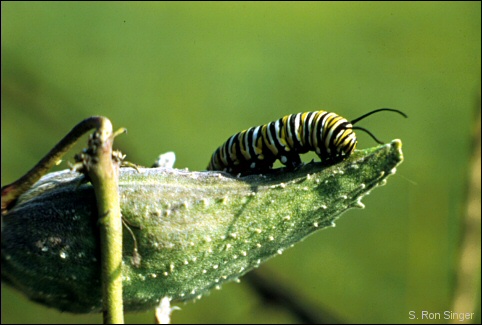

Nations have long known that a reputation for swift retaliation upon being attacked has survival value. Natural selection takes advantage of this, too, such as with the familiar aposematic coloration—or without the jargon, warning coloration. Animals quickly learn that bright reds, yellows, and oranges in other animals, like bees, wasps, and velvet ants, means "leave me alone—I retaliate!" And the conspicuous black and white of skunks and some hornets say the same. Warnings, of course, are not limited to the visual. The snarl of a too closely approached predator or the buzz of a rattlesnake speak danger as clearly as a red flag.
Being humans, who tend to make loud sounds when we're angry and
afraid, of course we accent the anger; it's not cool to admit to being scared. And
being so slow to admit that our displays are as much out of fear as anger, we accuse
such as the rattlesnake of anger. But what is it really saying other than, "go
away—I'm scared of you, but if you push me, I'll sure make you wish you
hadn't!"

Listen to the Audio (mp3 format) as recorded by KTEP, Public Radio for the Southwest.
Contributor: Arthur H. Harris, Laboratory for Environmental Biology, Centennial Museum, University of Texas at El Paso.
Desert Diary is a joint production of the Centennial Museum and KTEP National Public Radio at the University of Texas at El Paso.

A Monarch Butterfly caterpillar on a milkweed pod. The striking markings of the caterpillar warn predators of its foul taste. Photograph by S. Ron Singer, courtesy of the U.S. Fish & Wildlife Service.